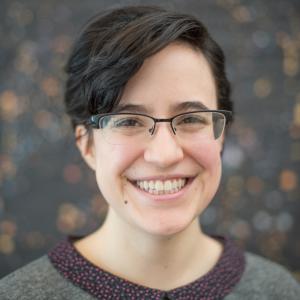In Celebration of Paint
When we talk with educators and caregivers about paint, there can be many complex reactions to the medium. Paint is one of the most popular materials for guests of all ages. Vibrant colors, blending new colors, and making marks immediately on a surface makes paint very exciting to work with. But with this medium, there can be stress around how educators or caregivers manage the material. Paint can easily be transferred to other surfaces in a home setting or classroom that can add more time to cleaning up and stress if it stains. When compared to drawing and collage, paint explorations can require more planning. In this post, we’ll explore how we’ve thought through the set-up and selection of tools and materials in advance to allow children the opportunity to explore the medium in a self-directed way, while making it manageable for educators and caregivers who are balancing a lot of factors all at once.
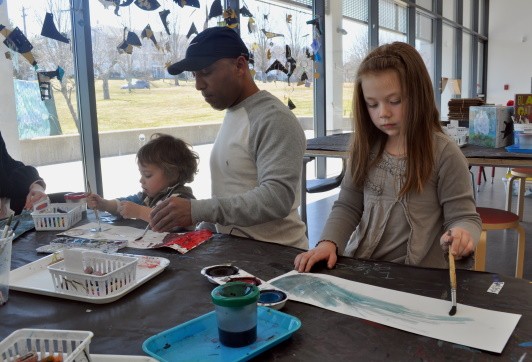
We’ve experimented over the years in the Art Studio to meet the complexities of paint. We’ve changed the colors each week, made a paint station for collagraph printmaking, and suspended paint in homemade stamp pads so paint could be overlaid to create new colors. We challenged ourselves last spring to create a painting project where guests could help themselves to the amount of paint and colors that they wanted, and are challenging ourselves yet again this fall to facilitate a painting project that is manageable during the pandemic. Below is a closer look at one of these projects, stay tuned later this week for the second post about our most recent project!
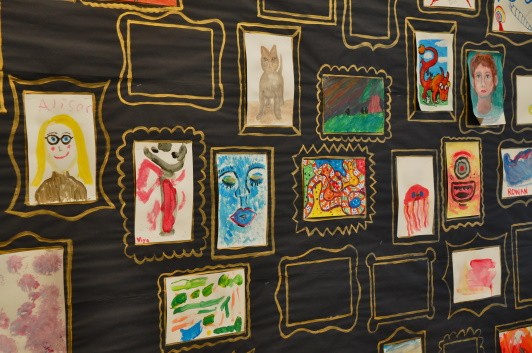
Last spring, we were inspired by the portraiture within the Now & Then exhibition as well as the bright color palette of Maira Kalman in The Pursuit of Everything exhibition. We wanted to encourage paint mixing, but needed to ensure that we could maintain this all-day, drop-in project for several weeks. The Art Studio can get busy with guests of all ages making art together, and we need to ensure that the space is ready when the next group arrives.
We thought it would be ideal to have the primary colors as well as black and white available, so guests could mix across the color spectrum. Looking back at previous projects, we decided that it would work well to have the five colors of Crayola washable tempera paint out on the table within 2-ounce squeeze bottles.

With more colors, guests often choose to use all of them which increases the amount of paint being used and the potential for it to spread on surfaces or clothing. Oftentimes, the “messiest” stations or smocks indicate that the child had a fantastic sensory experience with the paint, truly getting hands-on with the materials. While we wouldn’t want to discourage this exploration, we also realized that the paint left on the table or on the materials can affect the experience of the next group. So we wanted to balance encouraging experimentation with providing a prepared space for each group. To help do this, we decided to intentionally design certain areas of the project.
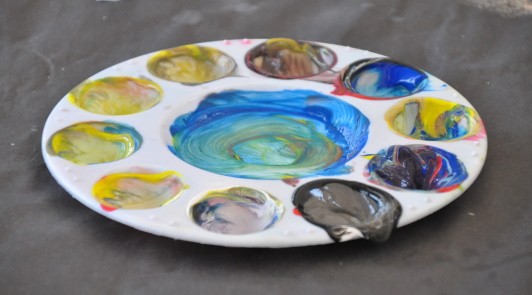
One way we did this was to provide each guest with a small palette. The paint palettes encouraged color mixing by providing several wells for creating new color combinations. The wells were deep enough to allow for plenty of paint to mix, while also being shallow enough that paint was not wasted.
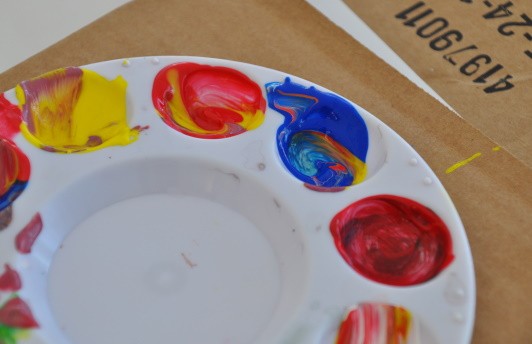
Since the palette had either 6 or 10 wells, it encouraged people to think through which colors they’d like in each well. The excitement of mixing colors in the wells meant that the mixing was more likely to happen on the palette than on the table top. And the paint we chose, Crayola washable tempera paint, comes out of clothing and off of surfaces easily.

During this project, we learned that providing larger trays underneath the paper helped contain the paint that would spread off the page with enthusiastic painting. This helped us keep the table clean for the next group. We had some guests use the trays as larger palettes, some used it to experiment with printmaking, and others finger-painted with the tempera, sliding the paint around with great concentration.
Although we thought through a lot of the details, the team in the Art Studio worked throughout the project to clean the space. Between rinsing brushes, washing palettes, re-filling water cups, wiping down surfaces, and drying smocks, we were very busy maintaining the space. Despite this additional cleaning requirements, we found that it was well worth the time and effort. Guests returned multiple days in a row and week after week to experiment with color mixing.

Some guests mixed colors with a few strokes, keeping the swirls intact. Some blended to create bold colors, subtle hues, and others preferred to keep the colors separate.
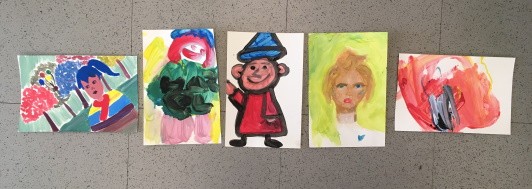
It was incredible to see the wide variety of paint hues and colors made from just the five colors provided. Seeing the range of palettes and paintings left behind showed us that the project was a success not only because we provided interesting materials with which to experiment, but also because we had learned from previous painting projects; designing the space and tools to encourage open-ended self-expression while making clean-up manageable.

